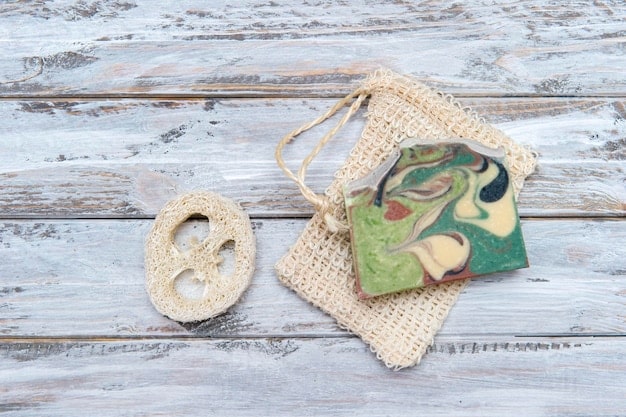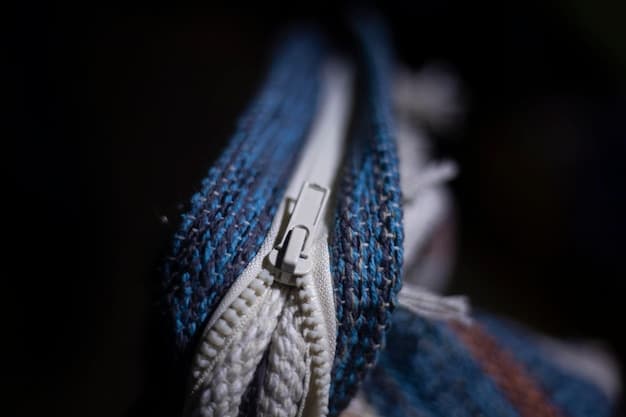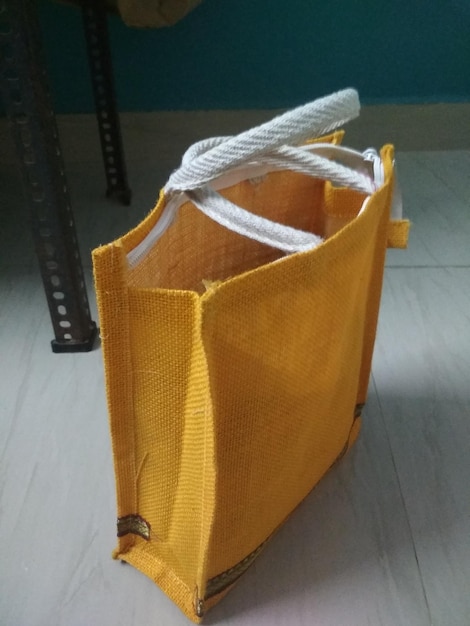How to Sew a Reversible Tote Bag in 3 Simple Steps: A Beginner’s Guide

Anúncios
Sewing a reversible tote bag can be achieved in three straightforward steps, involving precise fabric cutting, expert seam joining to create distinct inner and outer layers, and the final construction of handles and lining for a versatile, professional finish suitable for various uses and skill levels.
Embarking on a sewing project can be deeply rewarding, offering not only a practical item but also a sense of accomplishment. If you’ve been searching for a project that combines utility with creative expression, learning how to sew a reversible tote bag in 3 simple steps offers an accessible yet impressive journey into the world of fabric artistry. This guide will demystify the process, transforming what might seem like a complex task into an enjoyable and achievable craft, perfect for personal use or thoughtful handmade gifts.
Understanding the Reversible Tote Bag Concept
Creating a reversible tote bag provides a unique advantage: two distinct bags in one, offering versatility and adaptability for different outfits or occasions. This dual-sided design hinges on constructing two complete bag bodies—an outer and an inner—and then seamlessly joining them, effectively concealing all raw edges and providing a clean finish on both sides. The beauty of this project lies in its simplicity, making it an excellent venture for beginners while still allowing for advanced fabric choices and embellishments for seasoned sewers.
The core principle involves the meticulous preparation and joining of fabric pieces. Each side of the bag, whether it’s the external aesthetic or the internal lining, must be precisely cut and sewn to fit together harmoniously. This often means working with two contrasting or complementary fabrics, each bringing its own character to the finished product. From a purely functional standpoint, reversibility also adds durability and structure to the bag, as the double layer of fabric provides additional strength and support, extending its lifespan and utility.
A well-executed reversible tote bag showcases attention to detail. This project isn’t just about functionality; it’s about craftsmanship. The seamless transition from one side to the other, the hidden seams, and the integrated handles all contribute to a professional-looking product. Whether you opt for vibrant patterns, understated solids, or a combination, the reversible aspect allows for a dynamic interplay of design.
Choosing Your Fabrics Wisely
The selection of fabrics is paramount to the success and visual appeal of your reversible tote. Not only do the fabrics define the bag’s aesthetic, but their weight and drape also influence its overall structure and how it holds its shape. Consider both the outer and inner fabrics as equally important components of your design.
- Weight and Durability: Medium-weight fabrics like canvas, duck cloth, denim, or home décor fabrics are excellent choices. They provide sufficient body for the tote to stand on its own and withstand daily use. Avoid overly thin or flimsy fabrics unless you plan to incorporate interfacing for added stiffness.
- Pattern and Color Harmony: Think about how the two chosen fabrics will interact. Will they be contrasting and bold, or subtle and complementary? Consider patterns on one side versus a solid on the other, or two different patterns that share a common color palette.
- Care Instructions: Ensure both fabrics have similar care requirements, especially regarding washing and ironing, to maintain the bag’s integrity over time. Pre-washing your fabrics is always a good idea to prevent shrinkage after the bag is sewn.
Essential Tools for Success
Having the right tools at hand streamlines the sewing process and contributes to a professional outcome. Beyond your sewing machine, a few key items will make a significant difference. Precision is key in sewing, and these tools aid in achieving that accuracy.
- Cutting Tools: Sharp fabric scissors are essential for clean cuts, but a rotary cutter, cutting mat, and ruler can offer even greater precision, especially for straight lines.
- Marking Tools: Fabric chalk, a disappearing ink pen, or tailor’s chalk allow you to mark your cutting and sewing lines accurately without permanently staining your fabric.
- Pressing Tools: An iron and ironing board are indispensable. Pressing seams as you go flattens them, ensuring crisp edges and a professional finish. This small step makes a huge difference in the final appearance.
The introductory phase of any sewing project establishes the foundation for success. By understanding the reversible concept, selecting appropriate materials, and gathering the necessary tools, you’re not just preparing to sew; you’re setting the stage for a satisfying and beautifully crafted finished product. This foundational knowledge is crucial before diving into the actual construction steps.
Step 1: Precision Fabric Cutting and Initial Seams
The first critical step in constructing your reversible tote bag involves meticulously cutting your fabric pieces and performing the initial seams that will form the body of each bag. Accuracy at this stage is paramount, as it directly impacts the alignment and neatness of your finished product. Think of this as laying the groundwork for the entire project; any shortcuts here will likely show in the final outcome.
Begin by carefully measuring and marking your chosen fabrics. For a standard tote bag, you’ll need four main rectangular pieces: two for the outer bag and two for the inner lining. The dimensions will depend on your desired bag size, but a common starting point might be 18 inches by 16 inches for the body, plus strips for the handles. Always add a seam allowance (typically 1/2 inch or 5/8 inch) to your measurements for all sides. Precision in cutting ensures that your bag sides will match up perfectly, preventing frustrating misalignments later on.
Once your main body pieces are cut, you’ll proceed to sew the side and bottom seams for both the outer and inner bag structures separately. Place the two outer fabric pieces right sides together, aligning all edges. Pin securely along the side and bottom edges, leaving the top edge open. Stitch these seams, backstitching at the beginning and end to secure the stitches. Repeat this process for the two inner lining fabric pieces. These initial seams will form the basic “bag” shape for both components.
Creating the Boxed Corners for Structure
Boxed corners are a signature feature of many tote bags, providing width and allowing the bag to stand upright. This simple technique transforms a flat bag into a more three-dimensional, structured item. It’s a subtle detail that significantly enhances both the functionality and professional appearance of your tote.
To create boxed corners, first, flatten the bag at one of its bottom corners, aligning the side seam with the bottom seam. This will create a triangular peak. Measure from the tip of this peak down towards the seam line; a common measurement is 1.5 to 2 inches, but this depends on how deep you want your corners to be. Mark a straight line across this triangle, perpendicular to the seam. Stitch along this marked line, then trim the excess fabric, leaving a small seam allowance. Repeat for all four corners (two on the outer bag, two on the inner lining). This process essentially “folds out” the corners, giving the bag its characteristic foundational shape.
Preparing the Handles
The handles are a crucial component, determining how comfortable and strong your tote will be to carry. For a reversible bag, you’ll create two handles that are sturdy enough to support the bag’s contents. Handle construction typically involves folding and pressing fabric strips to create a clean, durable strap.
Cut two long strips of fabric for your handles. A common size might be 3 inches wide by 20-24 inches long, but adjust based on your preference for handle length and width. Fold each strip in half lengthwise, right sides together, and press. Stitch along the raw edge to form a tube. Turn these tubes right side out – a loop turner or safety pin can be very helpful here. Press the handles flat again, ensuring the seam is neatly tucked away. These prepared handles will be integrated in the subsequent steps, adding to the bag’s utility and design.
The precision exercised in this first step directly impacts the quality of your finished reversible tote. From accurate cutting to carefully sewn seams and expertly boxed corners, each element contributes to a bag that is not only functional but also visually appealing and durable. Taking your time here will save effort and potential frustration down the line.
Step 2: Assembling the Layers and Attaching Handles
With the outer and inner bag bodies sewn and the handles prepared, the second step focuses on bringing these components together. This stage is where the “reversible” magic truly begins to take shape, as you merge the two distinct bag structures and securely integrate the handles. Proper alignment and neat stitching are key here to ensure a clean, professional finish on both sides of your tote.
Begin by tucking your outer bag inside the inner bag, or vice versa, ensuring that their right sides are facing one another. This means the side of the fabric you want to be visible on the *inside* of one bag and the *outside* of the other will be facing out. Align the top raw edges of both bags carefully. Pin them together all around the perimeter of the opening, paying special attention to the side seams to ensure they match up perfectly. This meticulous pinning is crucial for preventing shifting during sewing and achieving a perfectly symmetrical opening.
Next, you will strategically place and attach the handles. Take each prepared handle and insert its raw ends between the two layers of the bag (the outer and the inner), about 3-4 inches in from the side seams. Ensure the handles are not twisted and that they are positioned cleanly within the pinned raw edges. Pin the handle ends securely in place, making sure they are sandwiched firmly between the outer and inner bag fabrics. This creates a strong, hidden attachment for your handles, essential for the bag’s longevity.

Sewing the Top Edge and Turning
The top edge seam is perhaps the most crucial for reversibility, as it will be visible from both sides. When sewing this seam, you need to leave a gap for turning the bag right side out. This seemingly small detail is vital for the entire reversible aspect of the project.
Using a 1/2-inch or 5/8-inch seam allowance, stitch around the entire top raw edge where the outer and inner bags are pinned together, along with the handles. Start at one side seam and stitch continuously around the opening. IMPORTANT: Leave a 4-6 inch opening along one section (preferably on the lining side, as it will be less visible) unstitched. This opening is critical for turning the bag right side out later. Backstitch at the beginning and end of your stitching, especially around the handle attachments, to reinforce these high-stress points.
Clipping Corners and Reducing Bulk
After sewing the top edge, you’ll need to trim the seam allowances slightly and clip any corners or curves. This step is about reducing bulk and ensuring that the fabric lies flat and smooth once the bag is turned right side out. Overly bulky seams can make the bag appear lumpy or amateurish.
Where the seam allowance meets a corner (if applicable to your bag design), trim off the corner diagonally close to the stitching line but without cutting through it. Along the entire top seam allowance, you can also trim the seam allowance by half, reducing its width. For any curves, make small snips into the seam allowance perpendicular to the stitching, again being careful not to cut through the stitches. These snips allow the fabric to spread and lie flat when turned. This meticulous trimming is a hallmark of professional sewing, contributing significantly to a neat finish.
The assembly of layers and the secure attachment of handles are pivotal points in constructing a reversible tote bag. Attention to detail in alignment, careful stitching, and strategic handle placement will ensure that your bag functions beautifully and looks impeccable, whether it’s displaying its outer print or its inner lining. This step truly transforms fabric pieces into a cohesive and versatile accessory.
Step 3: Finishing Touches and Achieving Reversibility
The final step in creating your reversible tote bag brings all the elements together, transforming your sewn pieces into a functional and beautifully finished item. This stage is about the crucial act of turning the bag right side out, closing the turning gap, and adding any last pressing or topstitching to give your tote a professional, polished look. Every action here contributes to the seamless reversibility that makes this bag so unique.
Carefully reach into the unstitched opening you left along the top seam in the previous step. Gently pull the entire bag, piece by piece, through this opening until the entire bag is right side out. This process can sometimes feel a bit awkward, but patience is key. Once the bag is right side out, gently push out all the corners so they are crisp and well-defined. You can use a point turner or a blunt object like the end of a chopstick to help with this, being careful not to push through the fabric.
After turning the bag, tuck the inner lining down into the outer bag. Smooth the fabrics inside so that the lining fits neatly within the outer bag. At this point, the raw edges of the opening you used for turning will be visible. Carefully press these raw edges inwards so they align perfectly with the already sewn seam. Pin this opening closed, preparing it for the final topstitching. This pressing and pinning ensures a neat, invisible closure, upholding the reversible nature of your tote.
Closing the Turning Gap and Topstitching
Closing the turning gap is easily done with a small, neat seam. You have two primary options for this, depending on your preference for visibility and durability. For a genuinely professional finish, mastering one of these techniques is essential.
You can either machine stitch the opening closed very close to the edge, or you can hand stitch it for an invisible finish. A machine stitch, sometimes called a “topstitch” at this point, is quicker and typically secure, but it will be visible. For an almost invisible closure, a ladder stitch (sometimes called a blind stitch) performed by hand is excellent. This stitch hides within the fold of the fabric, making the closure nearly undetectable, which is ideal for a reversible item. Whichever method you choose, ensure the stitches are strong and secure.
Once the turning gap is closed, it’s time for the final topstitch around the entire top opening of the bag. This topstitching serves multiple purposes: it secures the outer and inner fabrics together, prevents the lining from peeking out, and adds a professional, crisp finish to the bag’s opening. Using a sewing machine, sew a line of stitches about 1/4 inch from the top edge, all the way around the opening. You might choose to do a second line of topstitching a little further in for added decorative detail and strength. This final seaming elevates the bag from handmade to handcrafted.

Final Pressing and Inspection
The importance of a final press cannot be overstated. After all your sewing, a thorough ironing helps to set the stitches, flatten any remaining wrinkles, and give the bag a crisp, professional appearance. Press the entire bag, paying special attention to the seams and the top edge. This final touch often transforms a good sewing project into a great one.
Lastly, inspect your reversible tote bag. Check all seams for security, trim any loose threads, and ensure the handles are firmly attached. Try turning the bag inside out to appreciate its reversibility. A well-constructed reversible tote bag should look equally finished and polished on both sides, making it a truly versatile and functional accessory. This final verification ensures your hard work has paid off, resulting in a high-quality, durable bag ready for use.
Beyond the Basics: Customizing Your Reversible Tote
Once you’ve mastered the foundational steps of creating a basic reversible tote bag, a world of customization opens up. The beauty of handmade items lies in their ability to reflect individual style and cater to specific needs. Moving beyond the essential three steps allows you to inject personality, enhance functionality, and truly make your tote bag one-of-a-kind. These modifications can range from simple embellishments to more complex structural changes, each adding a new dimension to your project.
Consider the addition of internal or external pockets. A simple patch pocket on the lining side can be incredibly useful for storing small items like keys, a phone, or lip balm, preventing them from getting lost in the main compartment. For an external pocket, you might opt for a design that complements the fabric choice, adding both aesthetic appeal and quick-access storage. Zippers, snaps, or magnetic closures can also be incorporated at the top opening of the bag to provide added security for contents, transforming an open tote into a more secure carrying solution. These functional enhancements elevate the utility of your bag.
The handles also offer a significant opportunity for customization. While basic fabric handles are practical, you could experiment with different materials such as leather, webbing, or even rope for a unique look. Adjustable handles or cross-body straps can also be integrated, offering different carrying options and increasing the bag’s versatility. Furthermore, adding hardware like D-rings or swivel hooks allows for the attachment of keychains, decorative charms, or even a smaller pouch, further personalizing your tote.
Adding Personal Touches and Embellishments
Embellishments are where your creative flair truly comes to life. Simple additions can drastically change the appearance and feel of your reversible tote. These details are often what transform a functional item into a cherished accessory or a thoughtful gift.
- Appliqués and Embroidery: Personalize your tote with fabric appliqués, iron-on patches, or hand-stitched embroidery. This could be anything from monograms to intricate floral designs, reflecting your interests or the recipient’s.
- Decorative Topstitching: While essential topstitching is for function, decorative topstitching uses contrasting thread colors or unique stitch patterns to add visual interest along seams or the top edge.
- Fabric Accents: Integrate ruffles, pleats, or fabric flowers into the design. These can be added to the exterior of the bag, or even subtly across the top seam, providing textural variation and a playful touch.
Exploring Different Shapes and Sizes
Don’t feel limited to the standard rectangular tote. The simplicity of the reversible tote construction allows for experimentation with various shapes and sizes. A smaller, squarer tote might be perfect as a lunch bag, while a larger, wider version could serve as a beach bag or an overnight carry-all.
- Trapezoid Totes: Vary the top and bottom widths to create a trapezoidal shape, giving the bag a distinct silhouette. This subtle change can make the bag feel more designer-inspired.
- Rounded Corners: Instead of sharp boxed corners, try rounding the bottom corners of your bag pieces for a softer, more organic look. This requires careful clipping of the seam allowance to ensure a smooth curve when turned.
- Specialty Bags: Adapt the reversible concept for specific uses, such as a wine bottle tote, yoga mat bag, or a compact project bag for crafts. Each requires small adjustments to dimensions and possibly handle placement.
Customizing your reversible tote bag extends its potential far beyond a simple carrying item. By integrating functional pockets, experimenting with handle materials, adding personal embellishments, or playing with shape and size, you can create a truly bespoke accessory that meets specific needs and expresses your unique style. These enhancements turn basic sewing into an art form, making each tote a testament to your creativity and skill.
Troubleshooting Common Reversible Tote Bag Issues
Even with simple projects like a reversible tote bag, minor issues can arise during the sewing process. Knowing how to identify and effectively troubleshoot these common problems can save time, reduce frustration, and ensure a higher quality finish. Addressing issues as they appear, rather than ignoring them, is a cornerstone of good sewing practice and contributes to a more polished final product.
One of the most frequent challenges encountered is uneven seams or misaligned fabric pieces, especially when joining the outer and inner bags. This often happens if the fabric shifts during stitching or if the initial cutting was not perfectly straight. To prevent this, always take the time to pre-press your fabric well before cutting, use plenty of pins to secure layers, and stitch slowly, guiding the fabric carefully through your machine. If an uneven seam becomes apparent after stitching, it’s often best to unpick the stitches, realign the fabric, and re-sew. While unpicking can be tedious, it’s far less frustrating than a visibly crooked bag. Accuracy in initial steps cannot be overemphasized.
Another common concern relates to the bulkiness of seams, particularly at the corners or where multiple layers of fabric meet. This is especially true if you are using heavier fabrics. Bulky seams can make the bag look lumpy or prevent it from lying flat and crisp. To mitigate this, always trim your seam allowances, especially at corners, and clip curves if applicable. For very thick fabrics, you might consider using a tailor’s ham or clapper to aggressively press seams flat as you go. Topstitching not only provides a neat finish but also helps to flatten and secure bulky seams, adding structure and clean lines.
Addressing Handle Attachment Challenges
Attaching the handles securely and neatly can sometimes pose a challenge, particularly ensuring they are evenly spaced and not twisted. Handles endure significant stress, so their attachment must be robust. Uneven handle placement can throw off the entire aesthetic of the bag.
Before stitching, always double-check your handle placement by measuring the distance from the side seams. Use fabric clips or extra pins to hold them firmly in place, ensuring they are perfectly flat and untwisted between the fabric layers. Reinforce the handle attachment points by backstitching several times at the beginning and end of the seam where the handles are inserted. Some sewers even opt to sew a small square or ‘X’ shape at the very top of where the handle meets the bag after final topstitching, adding an extra layer of durability and a decorative touch. If a handle appears flimsy or uneven after the fact, carefully detach it and re-sew it with extra reinforcement.
Resolving Turning Gap and Topstitching Imperfections
The turning gap, while necessary, can sometimes be tricky to close invisibly, and topstitching can often go awry, appearing wavy or inconsistent. These are critical finishing details that impact the overall perceived quality of the bag.
To ensure an almost invisible turning gap, press the raw edges inwards perfectly, making sure they align with the rest of the seam. If hand-stitching with a ladder stitch, practice makes perfect; small, even stitches are key. For machine topstitching, use a longer stitch length (around 3.0-3.5) for a more professional look. Guide the fabric carefully and consistently, keeping an even distance from the edge. If your topstitching is wobbly, it’s often due to inconsistent pressure or speed. Taking your time and using a walking foot attachment on your sewing machine can significantly improve the straightness of your topstitching, especially on multiple layers of fabric.
Troubleshooting is an inherent part of any crafting process. By proactively addressing common issues related to uneven seams, bulky areas, handle attachment, or finishing details, you not only improve your sewing skills but also ensure that your reversible tote bag is a product of quality and craftsmanship. Persistence and attention to detail will lead to a truly satisfying result.
Caring for Your Handmade Reversible Tote Bag
Once your beautifully crafted reversible tote bag is complete, understanding how to care for it properly is essential for maintaining its appearance, durability, and the integrity of its reversible feature. Handmade items, especially those sewn from fabric, benefit from specific care practices that differ from those of mass-produced goods. Proper care ensures that your hard work lasts, and your tote remains a functional and attractive accessory for years to come.
The first and most important step in caring for your handmade tote bag begins before you even start sewing: pre-washing your fabric. This practice is crucial because it accounts for any fabric shrinkage before the garment is assembled, preventing unsightly puckering or distortion after your first wash. Always launder your fabrics according to their specific care instructions – typically cottons and linens can be machine washed, while more delicate fabrics might require hand washing or dry cleaning. By ensuring your fabrics are pre-shrunk, you mitigate the risk of your finished bag warping or resizing after it’s washed.
When it comes to washing the finished tote bag, the method largely depends on the fabrics you’ve chosen. If both the outer and inner fabrics are washable and colorfast, machine washing on a gentle cycle with cold water is often suitable. Using a mild detergent will help preserve fabric colors and fibers. Avoid harsh bleaches or strong stain removers unless absolutely necessary and test them on an inconspicuous area first. If your bag features embellishments like leather handles, metallic hardware, or delicate appliqués, hand washing or spot cleaning may be a more appropriate and safer alternative to prevent damage. Always consider the most delicate component of your bag when choosing a cleaning method.
Drying and Ironing for Longevity
Proper drying and ironing techniques play a significant role in maintaining the shape and appearance of your reversible tote bag. Incorrect methods can lead to creases, distortion, or even damage to the fabric or seams. Air drying is often the gentlest option, helping to preserve the integrity of the fabric and prevent unnecessary wear.
After washing, reshape your tote bag while it’s still damp. Lay it flat on a clean, dry surface or hang it to air dry, away from direct sunlight, which can fade colors. Avoid placing it in a clothes dryer on high heat, especially for fabrics prone to shrinking or for bags with multiple layers, as intense tumbling can put strain on seams and cause internal fabrics to shift. If machine drying is necessary, use a low heat or tumble dry setting and remove the bag while it’s still slightly damp to minimize wrinkles. Once dry, ironing the bag is key to restoring its crisp, professional finish. Use an iron temperature appropriate for your fabric types, pressing out any wrinkles and ensuring seams lie flat. Ironing also helps to re-set the topstitching, giving the bag a clean and polished appearance.
Storage Best Practices
How you store your reversible tote bag when not in use can also impact its longevity and appearance. Proper storage prevents dust accumulation, avoids creasing, and helps the bag maintain its shape. Consider where and how your tote will be kept when determining storage solutions.
For short-term storage, simply hanging your bag on a hook or placing it on a shelf is usually sufficient. For longer periods, or for totes made from delicate fabrics, storing them flat or lightly stuffed with tissue paper can help maintain their form and prevent handles from creasing unnecessarily. Keep fabric bags away from direct sunlight or excessive humidity, which can lead to fading, mildew, or deterioration over time. If you have multiple handmade bags, storing them individually rather than stacking them tightly will help prevent crushing or stretching. By following these simple care and storage guidelines, your handmade reversible tote bag will remain a cherished and functional item, reflecting the care and craftsmanship you put into its creation for many uses to come.
The Value of Crafting Your Own Reversible Tote
Crafting your own reversible tote bag goes far beyond the practical act of sewing; it embodies the essence of mindful creation, personal expression, and sustainable living. In an era dominated by mass-produced goods, the act of making something with your own hands carries profound significance, offering a unique blend of personal satisfaction and tangible utility. This project, which teaches you how to sew a reversible tote bag in 3 simple steps, is more than just a tutorial—it’s an invitation to experience the myriad benefits of the crafting journey itself.
One of the most immediate and tangible values of sewing your own bag is unparalleled customization. Unlike purchasing a bag off the shelf, a handmade tote allows you to select every detail: from the precise weight and texture of the fabric to the intricate patterns and the specific length of the handles. This level of control ensures that the final product perfectly aligns with your aesthetic preferences and functional needs. Want a bag for the beach? Choose a sturdy canvas and a vibrant print. Need a subtle accessory for daily errands? Opt for complementary solids and a sophisticated design. This bespoke quality means your tote isn’t just a carrying case; it’s a reflection of your personality and a testament to your creative vision.
Moreover, the process of sewing itself offers significant psychological and emotional benefits. The methodical rhythm of stitching, the focus required for precise cutting, and the satisfaction of seeing fabric transform into a functional object can be incredibly therapeutic. In a fast-paced world, crafting provides a welcome pause, a chance to engage in a meditative activity that reduces stress and fosters a sense of calm. The tangible outcome, a beautiful and functional bag, reinforces feelings of accomplishment and competence, boosting self-esteem and encouraging further creative pursuits. This intrinsic reward is often as valuable as the finished product itself.
Embracing Sustainability and Resourcefulness
Crafting your own tote also aligns perfectly with principles of sustainability and resourcefulness. In an age where environmental consciousness is paramount, handmade items represent a proactive step towards reducing waste and supporting ethical consumption.
- Reduced Environmental Impact: By choosing to sew, you bypass the energy-intensive and often wasteful processes of industrial manufacturing and shipping. You have control over material sourcing, potentially opting for organic, recycled, or upcycled fabrics, further minimizing your ecological footprint.
- Durability and Longevity: Hand-sewn items, especially when made with quality materials and careful craftsmanship, are often significantly more durable than their mass-produced counterparts. A well-made reversible tote is built to last, reducing the need for frequent replacements and thereby lessening overall consumption.
- Upcycling and Repurposing: This project offers an excellent opportunity to utilize leftover fabric scraps from previous projects or to upcycle old textiles, like denim jeans, curtains, or even durable clothing that might otherwise be discarded. This breathes new life into materials, turning potential waste into a beautiful and functional item.
The Gift of a Handmade Item
Perhaps one of the most cherished aspects of crafting is the ability to create meaningful gifts. A handmade reversible tote bag is more than just a present; it’s a heartfelt expression of time, effort, and care.
- Personal Touch: Unlike store-bought gifts, a handmade tote embodies a personal touch that demonstrates thoughtfulness and effort. It shows that you invested your skills and time specifically for the recipient.
- Unique and Memorable: Each handmade tote is inherently unique, carrying the subtle imperfections and specific charm that only a handcrafted item can possess. This makes it a memorable and distinctive gift, unlikely to be duplicated.
- Story and Connection: A handmade gift often comes with a story—the story of its creation, the choice of fabrics, or even a shared memory associated with its making. This narrative strengthens the bond between giver and receiver, making the gift even more special.
The journey of learning how to sew a reversible tote bag in 3 simple steps is an entry point into a world of creativity and practical skill. It provides not just a functional item but also a wealth of personal satisfaction, enables sustainable practices, and offers the joy of sharing unique, heartfelt creations. In a world saturated with the generic, choosing to craft your own items is a powerful statement of individuality and a commitment to valuable skills.
| Key Point | Brief Description |
|---|---|
| ✂️ Precision Cutting | Accurately measure and cut fabric for outer/inner bags and handles. |
| 🧵 Layer Assembly | Merge outer and inner bags, attaching handles securely within layers. |
| ✅ Final Touches | Turn bag out, close opening, and complete topstitching for a professional look. |
| 🎨 Customization | Personalize with pockets, different handles, or unique fabric choices. |
Frequently Asked Questions About Reversible Tote Bags
Medium-weight fabrics like canvas, duck cloth, or denim are ideal for their durability and ability to hold shape. Cotton and cotton blends are also popular choices for their versatility and ease of sewing. Ensure both fabrics have similar care requirements for best results.
Consider colors and patterns that either contrast boldly or subtly complement each other. You might choose one patterned fabric and one solid, or two patterns with a common color theme. Think about the feeling or occasion each side evokes, ensuring they work together yet offer distinct looks.
The key to perfect boxed corners lies in precise measuring and cutting. After sewing the bottom and side seams, flatten the corner so the seams align. Measure and mark your desired corner depth carefully before stitching. Trim excess fabric after sewing to reduce bulk, which helps the corner lie flat and crisp.
To ensure handle strength, use durable fabric for the handles, and reinforce the attachment points. When sewing the top seam of the bag with the handles inserted, backstitch multiple times over the handle ends. For extra security, you can stitch a small box or “X” pattern on the bag’s exterior where the handles meet the top edge after the bag is complete.
Yes, adding pockets is a great way to customize your tote. You can sew patch pockets onto the lining fabric before assembling the bag, creating internal storage. For external pockets, integrate them into the outer fabric pieces before sewing the main bag body. This enhances functionality without compromising reversibility.
Conclusion
Mastering how to sew a reversible tote bag in 3 simple steps offers an incredibly rewarding experience, transforming basic fabric into a versatile and stylish accessory. This project is a testament to the power of precise cutting, careful assembly, and thoughtful finishing, culminating in a bag that is not only functional but also a true reflection of your personal creativity. Whether you’re a novice looking for an achievable yet impactful project or an experienced sewer seeking a canvas for customization, the reversible tote provides endless possibilities. Embrace the process, enjoy the transformation, and carry your unique creation with pride, knowing you’ve crafted a piece that beautifully blends practicality with personal artistry.





